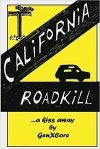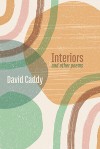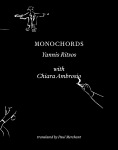
I’ve been thinking about poetry networks. I know that’s a word which carries all sorts of negative associations, but I don’t know what else to use in its place. Poetry has always relied on contacts and correspondence, but that of course is much quicker now thanks to email and the internet. Recently, I spent a great couple of hours talking to and drinking coffee with a publisher I have ‘known’ online for many years: it was great to finally meet, and one of the things we talked about was how both geographical and online clusters of poets exist; also, how unlikely some of those clusters and contacts are.
Later the same day, the postman delivered a copy of John Levy’s new book, sent and inscribed by the author. I was trying to think about how John and I knew each other, whether it was from one of my visits to Arizona (particularly the time Sheila Murphy arranged a poetry reading for me in her house) or via David Miller, who also knows John. There was also a packet of review titles from Chax Press, who are also based in Arizona and have published Sheila and David’s work. Stephen Bett, whose book was included in the parcel, and I have corresponded intermittently for several years, and he said in an email that Charles Alexander, who runs Chax, was sure we had met, probably at the same reading. And of course, Arizona is also home to writer John Martone as well as artist and poet David Chorlton, both other correspondents.
It’s a long way from meeting poets at the bar at small publishers events, or at readings or book launches, which used to be how contacts were made, but it all seems to serve the same purpose, which is to locate ourselves within the poetic geographies which exist, be they based on poetics, subject matter, shared interests or friendship. This enables us to share work-in-progress with other poets, to get feedback, share jokes and book recommendations with, discuss ideas, and of course bitch and moan about the poets and poetry we dislike, something almost all the writers I know excel at.
John Levy’s wonderful new volume, which contains what the title says, evidences this conversation and engagement with others. It’s a kind of small selected poems, with work from 1980 onwards that has previously appeared in small press editions, but also a lot of new work. Levy is a down-to-earth poet with an ear for turning the rhythms of everyday speech and thought into gentle, discursive narratives. Sometimes his poems are in relationship with artists and writers such as Picasso, Grzegorz Wróblewski and Robert Lax, at other times friends and relatives; one even brings Hitler into a story about turtles in Greece! Other poems address named relatives, family, landscape or animals, most are a distinct personal take on situations and events.
One of my favourites so far is ‘This Poem’, a wandering litany of thoughts about the poem as it happens, seemingly in real time. We are warned from the offset:
This is going to be one of those poems
that goes on and on and calls…
calls itself a poem […]
but it doesn’t go ‘on and on’ (although it does ‘keep going’), it develops whilst taking an unexpected route, stopping only to preen for ‘a moment in the mirror’ whilst discovering that ‘what could be mistaken / for a caress’ is ‘just a scratch’,
the itch about the size of the dot above the lower
case i. This poem circles that dot
and rejoices in the space around it.
This poem, in fact, is primarily about that space
and how that space embodies
the legendary
negative space. This poem is going to say
almost nothing about what’s positive about
the negative space, or almost
positive […]
although the poem and the flow of thought are resolved by turning ‘a sliver of positivity and then another’ into a railway track, one in use: we are warned to ‘Stand back.’
‘This Poem’ reminds me of the way Robert Creeley’s poems sometimes work, although Levy’s work tends to be more expansive and meandering. Like Creeley, however, Levy pays attention to not only thought as it develops, but to the everyday and often mundane. He makes the ordinary into something specific and unusual, be that remembering his childhood TV-watching in ‘The Life of Riley’ or constructing a prose poem, ‘Obit’, on the back of ‘The only local obituary notice of a stranger I cut out and put up on my study wall’. Its subject is ‘a man with a big smile’ who ‘looked like somebody I would’ve liked to know’, says Levy, exploring what he thinks of and invents about the stranger but also the compulsion which means the newspaper cutting stays on the wall at the end of the poem.
Levy skirts the maudlin and over-emotional, and is always aware of what language is doing. His poem ‘My Late Mother’ opens with the self-knowing declaration that
My mother has died
in many of my poems
after she died in
a hospital, when I
was too far away
which manages to convey both mourning and regret, but also a poetic distancing, which allows us to read the poem as language on the page, rather than just an emotive plea for the reader to share the author’s grief.
Grief, emotion, longing, loss, delight, and memory are all transmuted here into imagistic plain-speaking poetry. It embraces the everyday, the brevity and transience of experience, digression, conversation and friendship. Levy’s acute sense of the world around him allows the reader to renew their own acquaintance with nature, thought and language. It is a delightful, guileless, warm-hearted, indeed loving, collection of work, which reminds me how lucky I am in knowing the poets I do.
Rupert Loydell 29th June 2023








